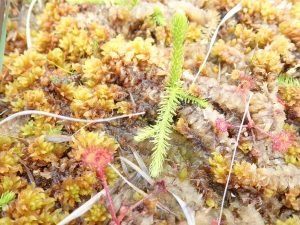Marsh Clubmoss in the Lake District
25th September 2020
This August, we were excited to be involved in the publication of a new Species Report for marsh clubmoss in the Lake District. Led by the Species Recovery Trust, the report summarises some positive results of recent survey work (2017-2019) of three known sites in The Lakes which were carried out with the help of Freshwater Habitats Trust.
This endangered wetland plant who’s name means ‘submerged little wolf foot’ has struggled in modern Britain with many sites lost to land drainage. It is therefore encouraging that over 20,000 plants were found at Fell Foot, close to the famous Blea Tarn, making this probably the largest population in England.

Clubmosses have been around for a long time, predating the dinosaurs by a couple of hundred million years. However, marsh clubmoss has a niche that is hard to protect in the modern world: bare ground amongst low-growing acid vegetation, kept wet with unpolluted water, on open, often partly trampled ground. One of its characteristic location is wet trackway edges, a very ancient kind of habitat which, coincidentally, dinosaurs are known to have created.
To read the full report click here:
To find out more about marsh clubmoss click here:
